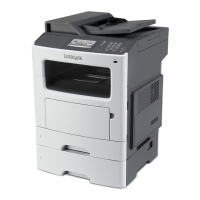Related topics
What are the network options in the virtual device, and how do they work?
When you add a network device, you can set options such as Administrator User ID, Logfile Name, Printer
Intervention Information for User, and Printer Intervention Information for Administrator.
• The Administrator User ID is the ID of the system administrator who receives printer intervention information.
• The Logfile Name is the field where you can specify the location and name of the logfile.
• The Printer Intervention Information for User and Administrator are the fields where you select how the printer
driver communicates important information to the current user (whoever is sending the job when the error
state is reached) and Administrator (the person listed in the Administrator User ID field).
What are printer classes, and how do they work?
Printer classes are available only when you are creating a queue on Sun Solaris, HP-UX, Linux with CUPS, or IBM
AIX. Enabling classes for a printer and then adding the printer to a class means that if one printer in that class has
a print job in process when another job comes in, the new print job can be printed on another printer in that class.
For more information, see “Working with printer classes” on page 22.
What are printer groups?
Printer groups are ways of organizing print queues to make them manageable for a user. There are two default
printer groups in the printer driver: All Printers and My Printers. My Printers is a subset of All Printers the user selects
to organize the volume of printers available on a system connected to a large network.
What is the difference between All Printers and My Printers in the tree on the left pane?
All Printers is a list of all print queues available on the system. My Printers is a subset of All Printers, and is determined
by the user.
When I right-click the print queue icon, I see the Web page for some printers. Why does it not appear for
others?
The page is available only for network-connected printers. It is not be available for printers connected by a parallel,
serial, or USB connection.
Can I change a print queue's printer type after creation?
No. You must re-create the queue with the appropriate printer type.
35

